It’s time, for real, to get our sweet bippies out of the wild.
Snowline descends from no longer naked peaks. We wake to ice on the overhead. The stove warms cabin…boils coffee. We relish the thermal rush a hot mug imparts to cold hands. We blow steam till we can drink it down.
First we have to cross Icy Strait at its widest and perhaps most difficult point. We wait out a storm. We wait for a window. We get a fair forecast. We hop and go.
Well, the forecasts falls short around here, often as not. We take what we’re offered. We pay the toll in muscle and make the crossing.
We ratchet our way along Chichagof’s shore until fair wind finds us. All too soon, we round the corner that rounds the voyage.
Yet we dawdle, reluctant to end our venture.
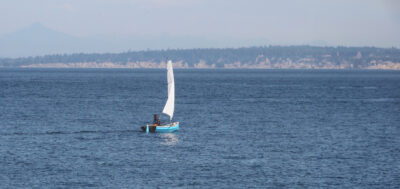
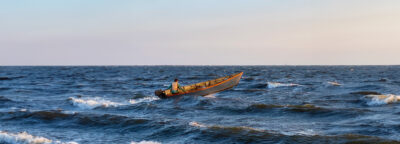

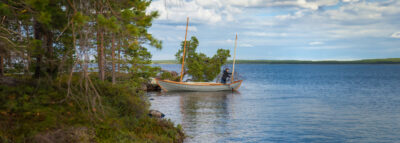
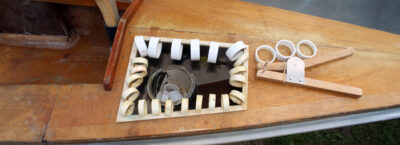
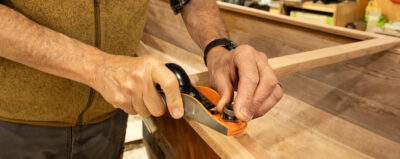
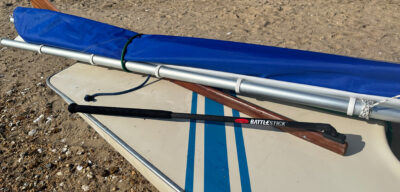
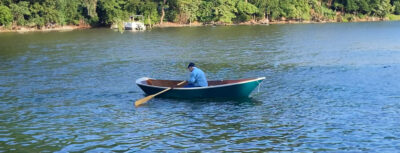
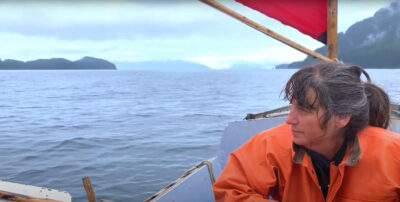
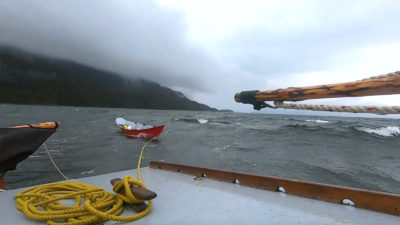
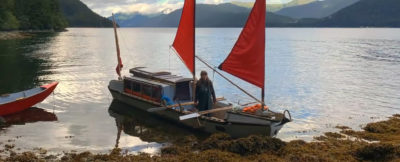
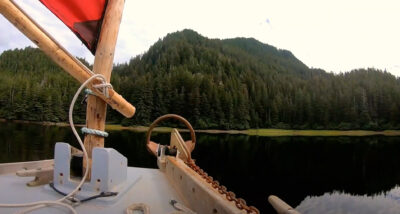
Dear Anke and Dave,
The end of a journey is always bittersweet and I could sense both the joy to have returned home but also the sadness for the adventure, at least this one, to end. Perhaps you will mention this in the next video, but I was wondering if you have any idea of how many miles you sailed and how many you rowed during your trip and what was the maximum number of hours you rowed in any given stretch? I’m looking forward to seeing your final video.
All the best,
Gene
Hi Gene,
The end of a voyage is indeed sweet sorrow!
We didn’t keep a strict count, but estimate about 700nm total (~450nm around Chichagof plus ~150nm up and down Lynn canal with detours). Maybe another 50nm in the dory? Chichagof’s coastline measure 720nm, but we skipped across the mouths of several inlets.
We maybe rowed a half of that… some longer stretches but lots of short-ish pokes in and out of closer quarters. Seems as if we had more than our share of headwinds, but they tend to stick in the memory. 8/
Our longest stretch was about 22nm, which took us about 12 continuous hours, pushing against some headwinds and half of it a foul tide. We lost a couple of hours to a bad decision which sent us across a high current shoal, and about 20min as the Coast Guard checked us out in our first encounter in 30 years!). This was the stretch where we left Outer Chichagof for Lisianski Inlet in mild weather… once we’d rounded the cape it was relatively protected water.
As it turns out, we enjoyed rowing more than we expected. Normally we wait for fair winds and only buck it when we must. But on this trip, we didn’t hesitate to get rowing for the fun of it. If things got too much, it was so easy to duck out or hang on, it eased most apprehension about contrary conditions.
Dave and Anke
Dave and Anke,
It’s interesting to see your rowing/sailing split, especially given the time of year. I would have expected it to be more sailing than rowing. But then, that is what I expected on my own sail-and-oar cruise along British Columbia’s section of the Inside Passage over the course of two summers, 2016 and 2017. I covered about 650 nm total, and in the first summer, the south half, the row/sail split was about 50/50. Second summer, the north half, the row/sail split was 57/43 %. Very similar to your trip, really. It seems, from this small sample, that you can’t rely on sailing the whole time anywhere on our shared coast.
Hi Alex and Gene,
I should say our numbers were heavily influenced by goals and schedules.
For this trip, we started two and a half months later than we’d hoped (15 July vs 1 May). For the first half, we felt time pressured, and although we relaxed more and more as we neared the turn to home in a year that proved mild, we still had a destination. Accordingly, we moved more often, and along a more straightforward path than is our usual. This in turn means rowing in calm or light contrary winds, and turning winds foul relative to our goals (they’d be fair if we just whimsied with them!).
So yes, lots of light winds up here, but if one has time and inclination to let the wind decide direction, there’s a lot of sailing to be had!
To take one’s own sweet time is the sweetest!
Dave Z
Dear Dave and Anke,
Thanks so much for such a comprehensive response and I am even more impressed with your adventure knowing how many miles you actually travelled and how much of it was dine under your own power. Makes me feel downright guilty about having a tiny 60-year-old Seagull outboard strapped to the back of my little sailboat to get myself back home if the winds are contrary or if after a long day on the water, I am just too lazy to row home. Hhowever, your trip was the perfect kind where you were not trying to adhere to a predefined schedule but could wait out conditions and enjoy what were some absolutely amazing locations.
Thanks again and with my best regards,
Gene
Hi Gene,
Having a schedule or not makes all the difference. Motors definitely extend your range in the face of juggling other demands and priorities. No shame in finding one’s own balance!
We think of ourselves as lazy, always looking for the easy way. While muscle and wind power take some physical effort, we find it’s more fun and less >work< than required by motors with their expense, care, and feeding. But this within a lifestyle that few choose for themselves.
A major perk for us is freedom from refueling, which can only be done in towns. For most, that's a non-issue.
So enjoy that extended time on the water your Seagull affords!
Dave and Anke